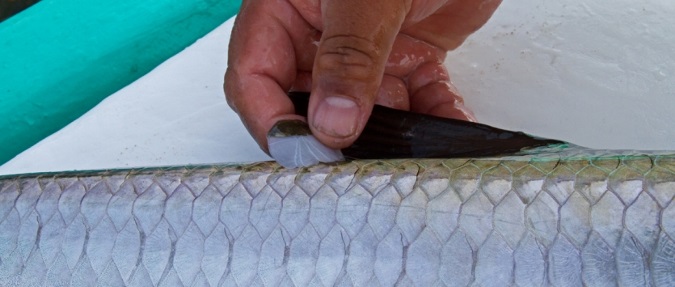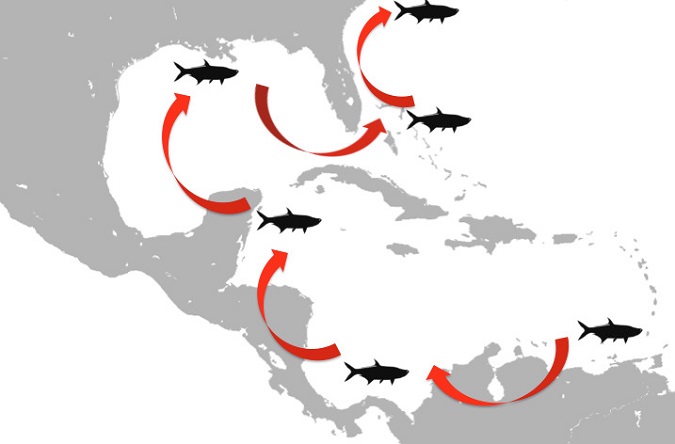The Tarpon Genetics Program has concluded, providing illuminating results that will help build effective regional management and conservation plans for tarpon. This two-year collaborative study between BTT and the Florida Fish and Wildlife Conservation Commission (FWC) sought to study how many distinct Atlantic Tarpon (Megalops atlanticus) populations exist, and if more than one existed, where they were geographically located.

Thanks to the efforts of anglers, guides, lodges, and researchers, more than 23,000 tarpon scale samples were collected from all over the world, providing the study with a massive dataset for analysis. Many were collected from Florida waters during the previous FWC Tarpon Genetic Recapture Study, and scales were collected from tarpon in 24 other areas across the Gulf of Mexico, Caribbean Sea, and Atlantic Ocean. Different portions of tarpon DNA were examined to determine if the patterns in each individual tarpon were the same or different from other tarpon. If they were the same, then no matter where the fish were caught, they would be considered part of the same genetic population.
How many distinct tarpon populations exist?
Only one! A rigorous and comprehensive suite of statistical approaches was used to analyze the data. The overall level of genetic diversity in the Atlantic tarpon indicated high levels of gene flow (mixing over generations through interbreeding) across the entire region. Fish from Virginia to Louisiana and all across the Caribbean to Brazil displayed shared genetic profiles. Even tarpon samples collected from across the Atlantic Ocean, along the West African coast, shared these profiles. The results reveal that a single Atlantic tarpon stock exists. Although a preliminary study by McMillen-Jackson in 2005 suggested two stocks (West and East Atlantic), our study used a much more extensive dataset and advanced analytical methods to reveal trans-Atlantic connectivity and one region-wide tarpon stock.
This map displays the genetic profiles from one microsatellite locus, Mat-22. Each pie chart is a tarpon collection area, and each color wedge is a unique microsatellite allele (repeat unit). Alleles were shared among all sites across the Atlantic Ocean, Gulf of Mexico, and Caribbean Sea. 
How can gene flow occur over such great distances?
Two life history traits of tarpon likely maintain the high levels of population connectivity we observed across the region. First, adult tarpon are capable of long-distance migrations (tagged fish have been documented traveling more than 1700km). During this study, several long-distance recaptures were identified. Three fish first caught and sampled by anglers in Florida waters were recaptured by different anglers along the Alabama and Louisiana coasts more than three years later. These migrations increase genetic mixing, as fish from several areas likely converge on the same spawning sites.
Second, tarpon larvae can be transported great distances by ocean currents. This dispersal of young tarpon also increases mixing, as larvae originating from different spawning sites may settle in the same inshore location. The connections don’t have to be direct, they can occur in step-wise fashion: a tarpon larvae spawned in Cuba may end up in Belize, where it grows up and spawns and its larvae are transported to Florida. This connects Cuba, Belize, and Florida tarpon populations. It’s important to note that it only takes a few percent of mixing between locations in each generation to result in a single population or stock.
Warm ocean surface currents in the region flow in a clockwise path, resulting in the movement of larvae among areas. Additionally, the South Equatorial Current (SEC) flows West from Africa towards Brazil and the southern Caribbean. Despite the distance between Africa and South America, the data reveal genetic connectivity in tarpon. This may occur through larval dispersal via the SEC and rare adult migrations, though migratory pathways have not been studied in the Southern Caribbean and Eastern Atlantic.
By: Dr. Liz Wallace
